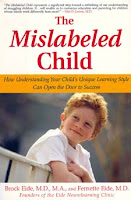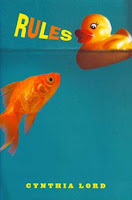
Ever since we set up this blog, I've been intending to write about Roy Richard Grinker's
Unstrange Minds: Remapping the World of Autism. I finished reading it about a week before the blog got started, and it was definitely a book that I kept wandering into the other room to share bits of, or had to stop reading to start a conversation about something I had just read because it was so interesting. But I hadn't actually written anything until now, because there seemed like so much to say.
Grinker seems to be the perfect person to tell the story of the autism diagnosis, which is how he starts his book. As the son and grandson of early American psychiatrists, he grew up amongst people who had seen the rise and fall of several waves of psychiatry. His grandfather gave him informal lectures about the history of psychiatry from a young age, giving Grinker an insider's view. He talks about how his grandfather felt that the psychoanalysis movement set child psychiatry back by years. This becomes a telling point, when Bruno Bettelheim's "refrigerator mother" theories enter the story, and becomes quite shocking when Grinker notes that child psychiatry (and therefore autism treatment) in France still remains based on psychoanalysis, even though all other branches of psychiatry there have moved on with the rest of the world.
It was utterly fascinating to me to read about the actual creation of the vaunted bible of diagnosis, the DSM-IV. In some ways, knowing that there were no real standards of diagnosis before the DSM-III threatens one's faith in psychiatry. On the other hand, understanding how much refinement those diagnostic criteria have undergone in such a comparatively short time period, from the restrictive, Kanner-based diagnosis in the DSM-III, to the much broader spectrum-based diagnosis, including high-functioning autism and Asperger's Syndrome in the DSM-IV, gives a much clearer understanding of how there came to be such an explosion of autism diagnoses in recent years.
This trip through history lends great weight to his argument that the apparent rise in the number of people with autism is not, in fact, an epidemic, but instead evidence that we are getting better and better at accurately counting the number that already existed. He explains the difference in a rise in rate of incidence (epidemic) vs. rate of prevalence (more accurate counting) like this:
One example of the effect of the broadening of criteria on prevalence rates can be observed in statistics from California, where the number of people who received services between 1987 and 1998 under the category of autism rose by 273 percent. Morton Ann Gernsbacher and colleagues, in a 2005 journal article, used an analogy to show how such an increase could happen in the absence of a true increase in incidence. They asked readers to supposed they had asked how many of the men who lived in McClennan County, Texas, were "tall" at two different points in time - the mid-1980s and the mid-1990s, using two different definitions of tall. Suppose also that in the mid-1980s, "tall" was defined as six feet, two and a half inches, but that in the mid-1990s, the criterion was loosened a little, to six feet. There would have been 2,778 tall men in the earlier group, but 10,360 men in the later group, reflecting a 273 percent increase... Clearly, the hypothetical Texas study would be flawed - it shows a 273 percent increase when there may not have been any real increase in height.
-Grinker, 158.
He also points out, tellingly, that the rise in the reported diagnosis of Traumatic Brain Injury (TBI), added as a recognized diagnostic code under the IDEA in the same year as autism, has increased at the same pace, simply because it is now recognized as a valid diagnosis. Clearly, these children had been reported under other codes before; autism and TBI symptoms did not suddenly manifest in otherwise typically developing children when the codes were added.
As an anthropologist, and married to a psychiatrist who studied medical anthropology, he is also uniquely suited to being our tour guide on a trip around the world, revealing how autism as a disorder is perceived, and how individuals, particularly children, with autism are treated in different cultures. He focuses particularly on South Africa, India, and South Korea as countries with emerging autism awareness. He provides anecdotes from interviews with families in these countries, describing the services they can or cannot get, and how others in the community react to their children. He also provides a look at how those services and societal attitudes have changed in the past several years, even since he first met the parents, as autism has become more commonly known and accepted.
One interesting fact that he brought up was that individuals with autism are found to do better over time in rural, "undeveloped" areas than in industrialized, highly developed ones. He offers no true explanation as to why, (I don't know that anyone really has a definitive one,) but illustrates the point by giving two types of examples from within the same country, Korea. Villages in rural areas had individuals with ASD, they were integrated into the community, and they received psychiatric medications as part of their regular medical care. By contrast, in Seoul, families hid their children with ASD in their apartments to the extent that some of their neighbors didn't even know they had another child, and these children tended not to receive medication because the families did not want to visit a psychiatrist due to social stigma.
He does point out that conditions in Seoul are improving as autism becomes more widely recognized, with more open schools, services, and less stigma. It made me think of my trip to an autism conference in Taiwan with my mother in 1999, organized by a parent society, with international researchers as speakers, trying to bring more awareness to the whole country. I was, at the time, shocked to think that so little was known there, and that an autism society had only just formed. I wonder now how things have progressed there in the past 8 years. In any case, this part of the book makes the reader think about the global picture of autism awareness, rather than just at the national level, and I think this is a good thing, as the world, particularly the autism world, becomes a closer-knit informational community every day.
Grinker does talk about his own daughter with autism, and the stories he gives about her are clearly lovingly chosen, but they are also always chosen to illustrate his larger points, so, despite the subtitle on the book of "A Father, A Daughter, and a Search for New Answers," I just wanted to emphasize how much more his book covers, and how original the book is in the current autism literature market. Needless to say, I highly recommend it.
*Roy Richard Grinker was interviewed about his book on the Diane Rehm show on
January 22, 2007.
**His website is
http://www.unstrange.com/.
 Although the title of this book is mislabeled itself, the sub-title sums up the important message of the authors. The content of the book is not merely for the child that is mislabeled or unlabeled. This book enables the parent or professional to get past a diagnosis (or lack of one) and begin to recognize all the needs of the child. Although much of the information provided could be considered material for a college textbook, the authors are able to present it clearly and compassionately so that it is a valuable resource for the lay person or professional. Explanations of brain functioning and the process of learning are fantastic! After the basics, specific topics such as : autism, sensory processing disorder, dyslexia, dysgraphia, and giftedness are discussed with strategies that are manageable with results that are visible. The websites and resources section alone make this book well worth the money. Being the parent of a 14 year old diagnosed with PDD-NOS, I found chapter 5, What? Huh? Auditory Problems in Children, to be the most useful for me. I find that my son's auditory processing issues are the hardest to explain to the teachers and other staff at his school. This section helped me understand auditory problems better and helped me be more effective in communicating my son's needs to others.
Although the title of this book is mislabeled itself, the sub-title sums up the important message of the authors. The content of the book is not merely for the child that is mislabeled or unlabeled. This book enables the parent or professional to get past a diagnosis (or lack of one) and begin to recognize all the needs of the child. Although much of the information provided could be considered material for a college textbook, the authors are able to present it clearly and compassionately so that it is a valuable resource for the lay person or professional. Explanations of brain functioning and the process of learning are fantastic! After the basics, specific topics such as : autism, sensory processing disorder, dyslexia, dysgraphia, and giftedness are discussed with strategies that are manageable with results that are visible. The websites and resources section alone make this book well worth the money. Being the parent of a 14 year old diagnosed with PDD-NOS, I found chapter 5, What? Huh? Auditory Problems in Children, to be the most useful for me. I find that my son's auditory processing issues are the hardest to explain to the teachers and other staff at his school. This section helped me understand auditory problems better and helped me be more effective in communicating my son's needs to others.






